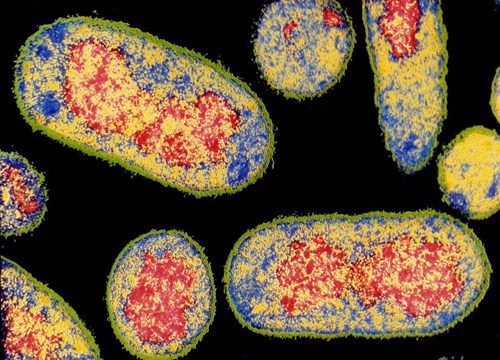mcr-2, 3 and 8 gene positive strains now available from NCTC

Transmissible and plasmid mediated mcr-1 gene mediated resistance to colistin (polymyxin E), a “last-resort” antibiotic for treatment of multidrug-resistant infection caused by gram-negative bacteria, was first reported in 20161. Preservation of colistin as an effective antibiotic and viable antibiotic chemotherapy when treating infection requires antibiotic stewardship and surveillance of antibiotic resistance determinants of bacteria. For these purposes, NCTC 13846 Escherichia coli (a phenotypically colistin resistant strain, positive for the mcr-1 gene2) was made available from the National Collection of Type Cultures for use as a colistin resistant control strain and was included in the European Committee on Antimicrobial Susceptibility Testing (EUCAST) guidelines for harmonised global antibiotic resistance surveillance methodologies. Shortly after NCTC 13952 Salmonella enterica subsp. enterica serotype Typhimurium, also mcr-1 positive, was made available to the microbiology community by the NCTC.
Recently, the number of mcr gene positive strains available from the NCTC has been further enhanced with the following strains:
|
NCTC No. |
Organism |
mcr gene |
|---|---|---|
|
Escherichia coli |
None - unmodified strain |
|
|
Escherichia coli |
mcr-1 |
|
|
Escherichia coli |
mcr-2 |
|
|
Escherichia coli |
mcr-3 |
|
|
Escherichia coli |
mcr-8 |
Each strain has been genetically modified with functional mcr-like genes cloned into the pDM1 plasmid of each strain, with the exception to NCTC 14376 which serves an unmodified vector. The expression of each plasmid is isopropyl β-d-thiogalactoside (IPTG)-inducible. Prior to deposit, these strains were used to build a MALDI-TOF-MS based method to identify modification precipitated by the expression of the mcr gene family3, thus validating the use of these strains as controls for genetic and phenotypic markers of colistin resistance.
A reference booklet that compiles the antimicrobial resistance reference strains available from the National Collection of Type Cultures is available for download here.
Copy prepared by Jake D. Turnbull.
Follow Jake on Twitter @HotchPotchJake
References
1. Liu YY, Wang Y, Walsh TR et al. . Emergence of plasmid-mediated colistin resistance mechanism MCR-1 in animals and human beings in China: a microbiological and molecular biological study. Lancet Infect Dis 2016; 16: 161–8.
2. Doumith M, Godbole G, Ashton P, Larkin L, Dallman T, Day M, Day M, Muller-Pebody B, Ellington MJ, de Pinna E, Johnson AP, Hopkins KL, Woodford N. Detection of the plasmid-mediated mcr-1 gene conferring colistin resistance in human and food isolates of Salmonella enterica and Escherichia coli in England and Wales. J Antimicrob Chemother. 2016 Aug;71(8):2300-5.
3. Laurent Dortet, Remy A Bonnin, Ivana Pennisi, Lauraine Gauthier, Agnès B Jousset, Laura Dabos, R Christopher D Furniss, Despoina A I Mavridou, Pierre Bogaerts, Youri Glupczynski, Anais Potron, Patrick Plesiat, Racha Beyrouthy, Frédéric Robin, Richard Bonnet, Thierry Naas, Alain Filloux, Gerald Larrouy-Maumus, Rapid detection and discrimination of chromosome- and MCR-plasmid-mediated resistance to polymyxins by MALDI-TOF MS in Escherichia coli: the MALDIxin test, Journal of Antimicrobial Chemotherapy, Volume 73, Issue 12, December 2018, Pages 3359–3367.
